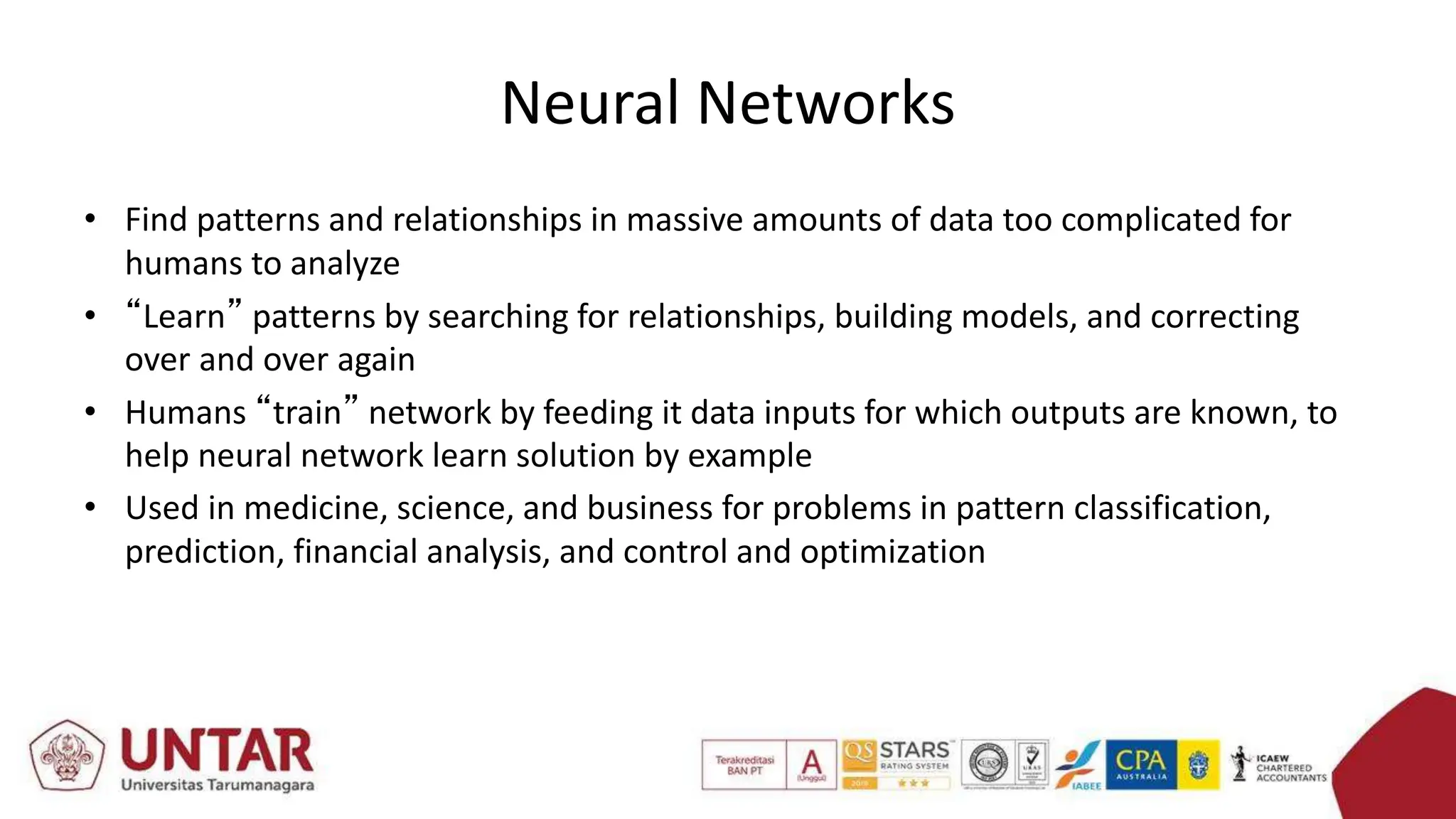The document discusses the importance of knowledge management systems in businesses, detailing their role in enhancing productivity and competitive advantage. It highlights the various types of knowledge systems, including enterprise-wide systems, knowledge work systems, and intelligent techniques used for knowledge management. Additionally, the document explores the knowledge management value chain, organizational benefits, and various intelligent technologies that assist in managing knowledge effectively.










































